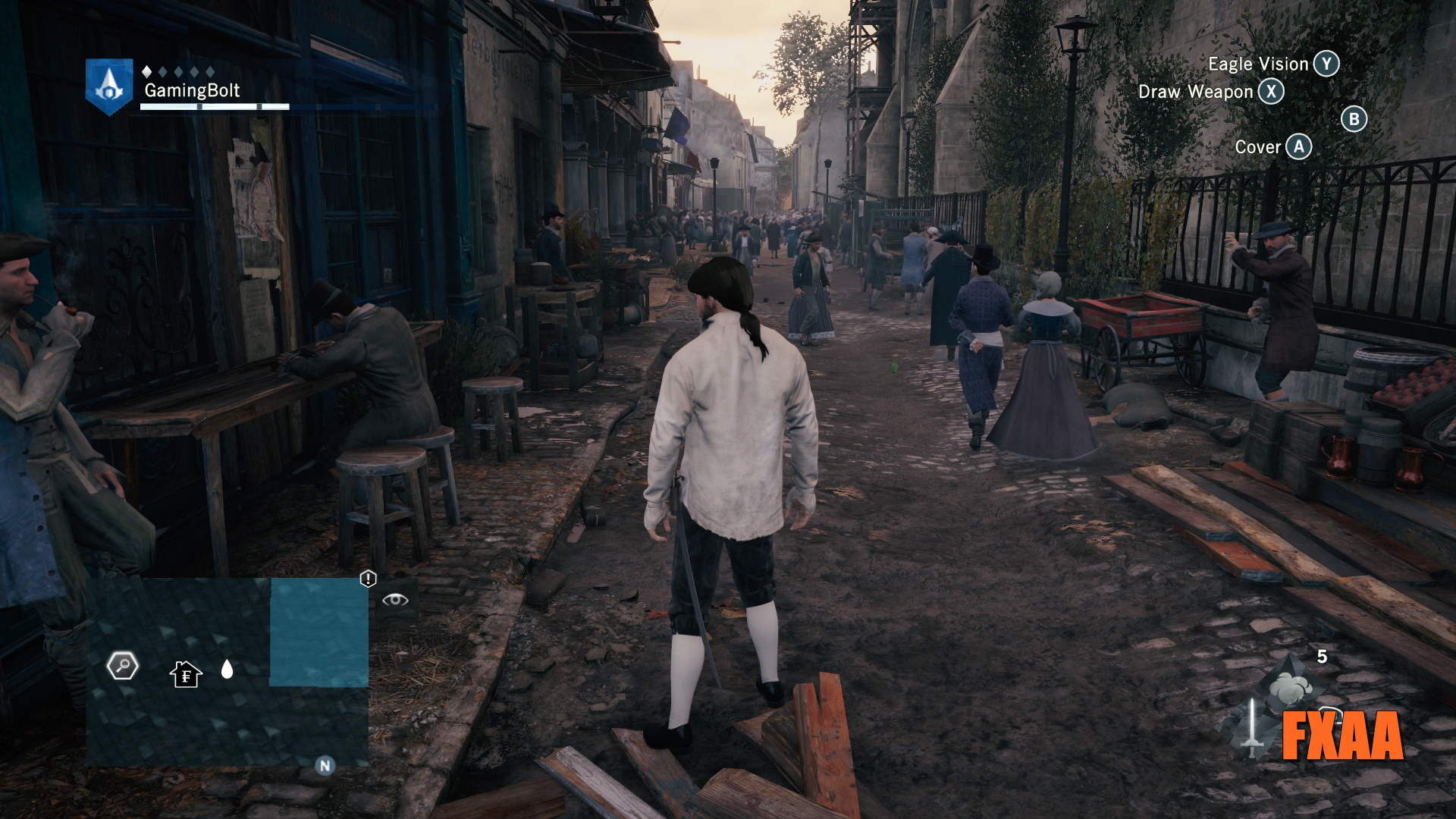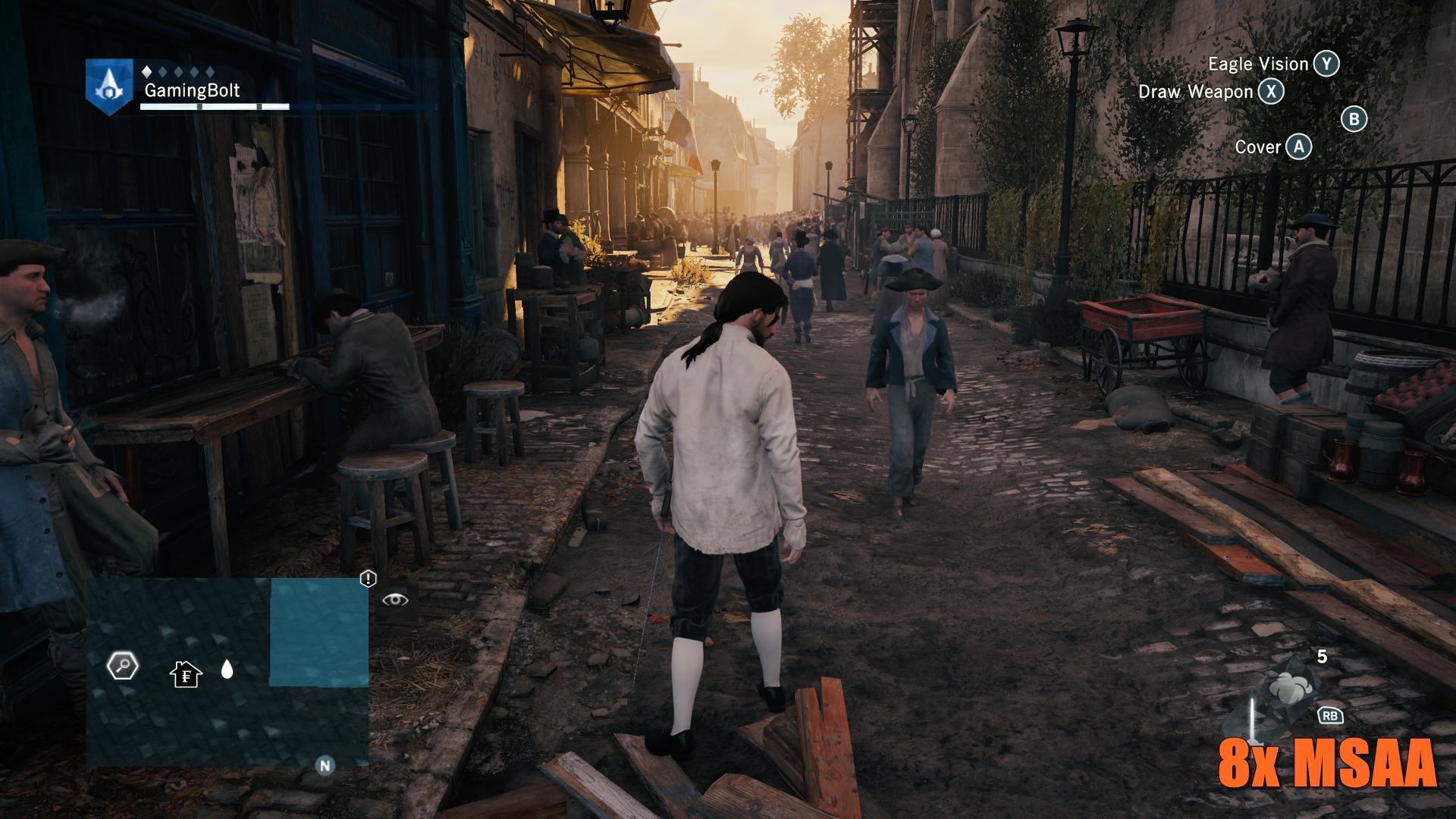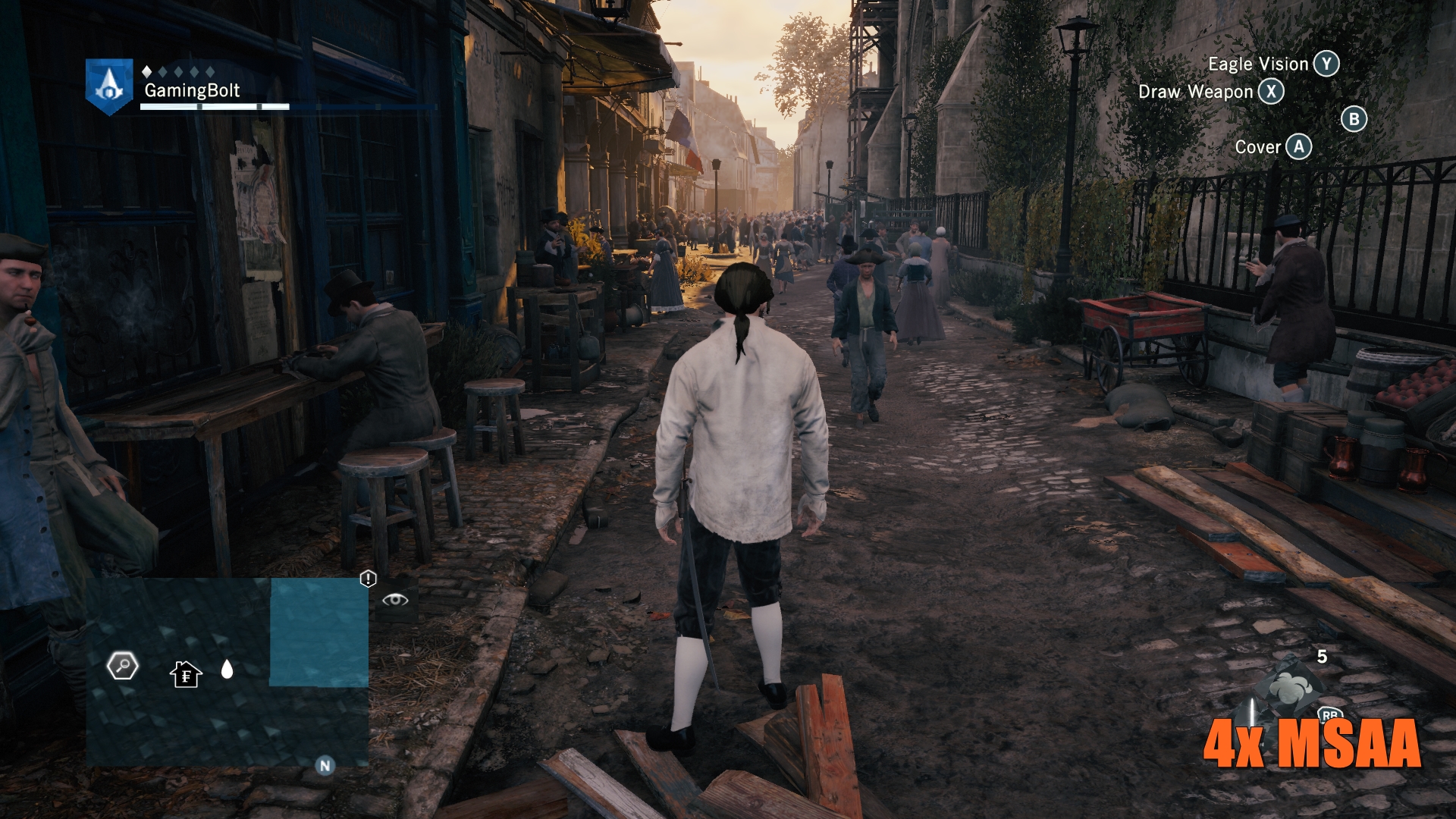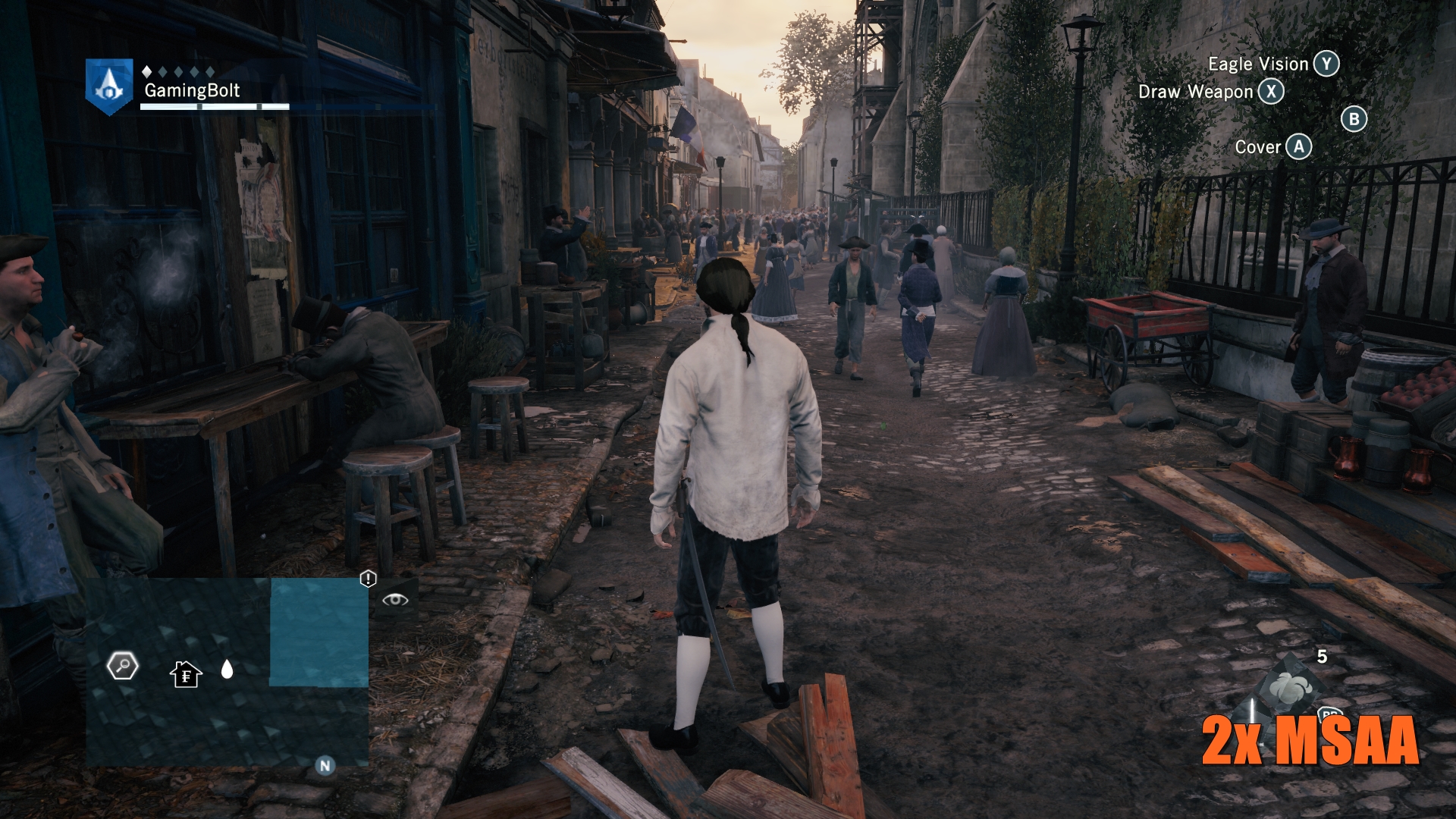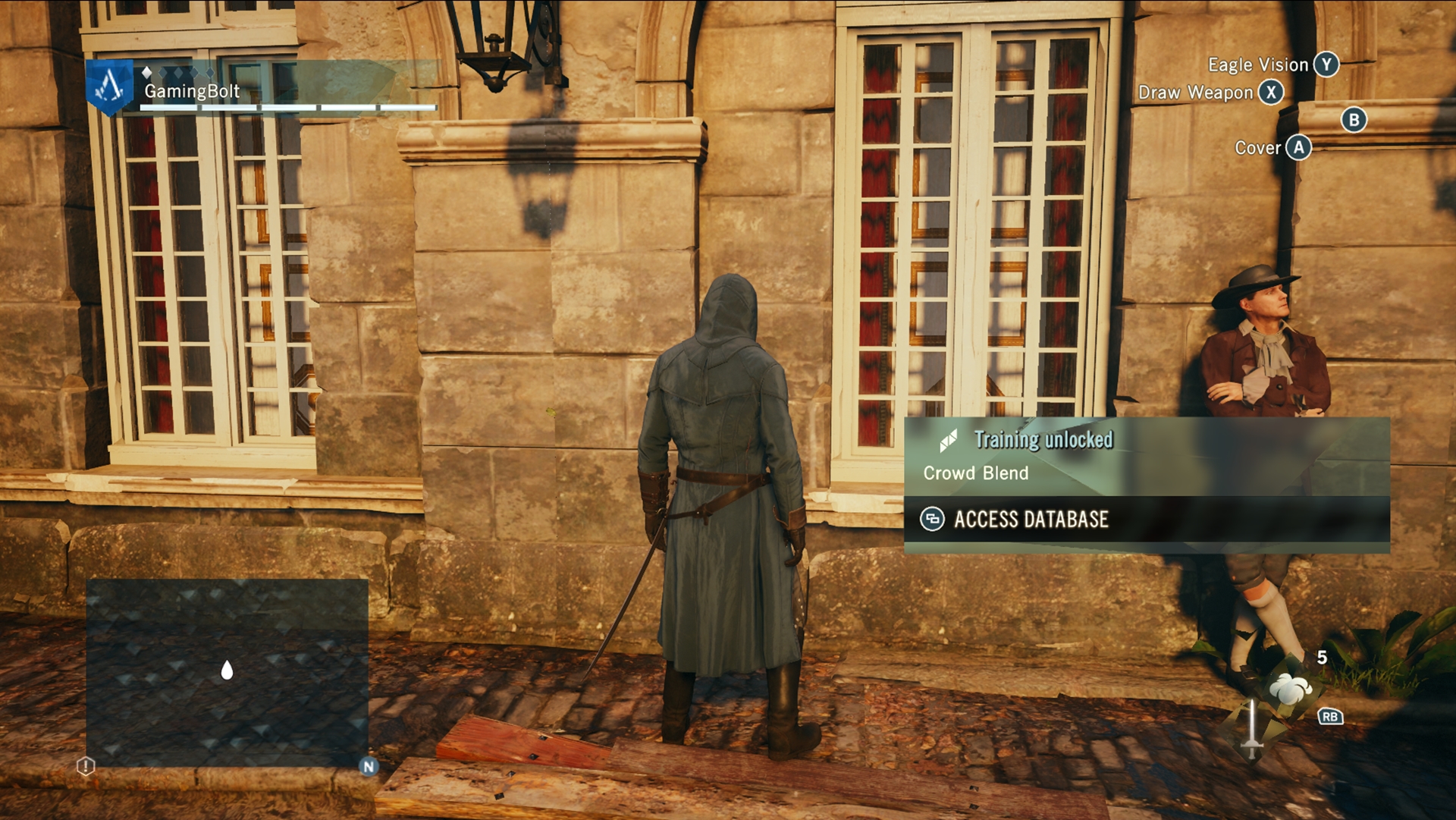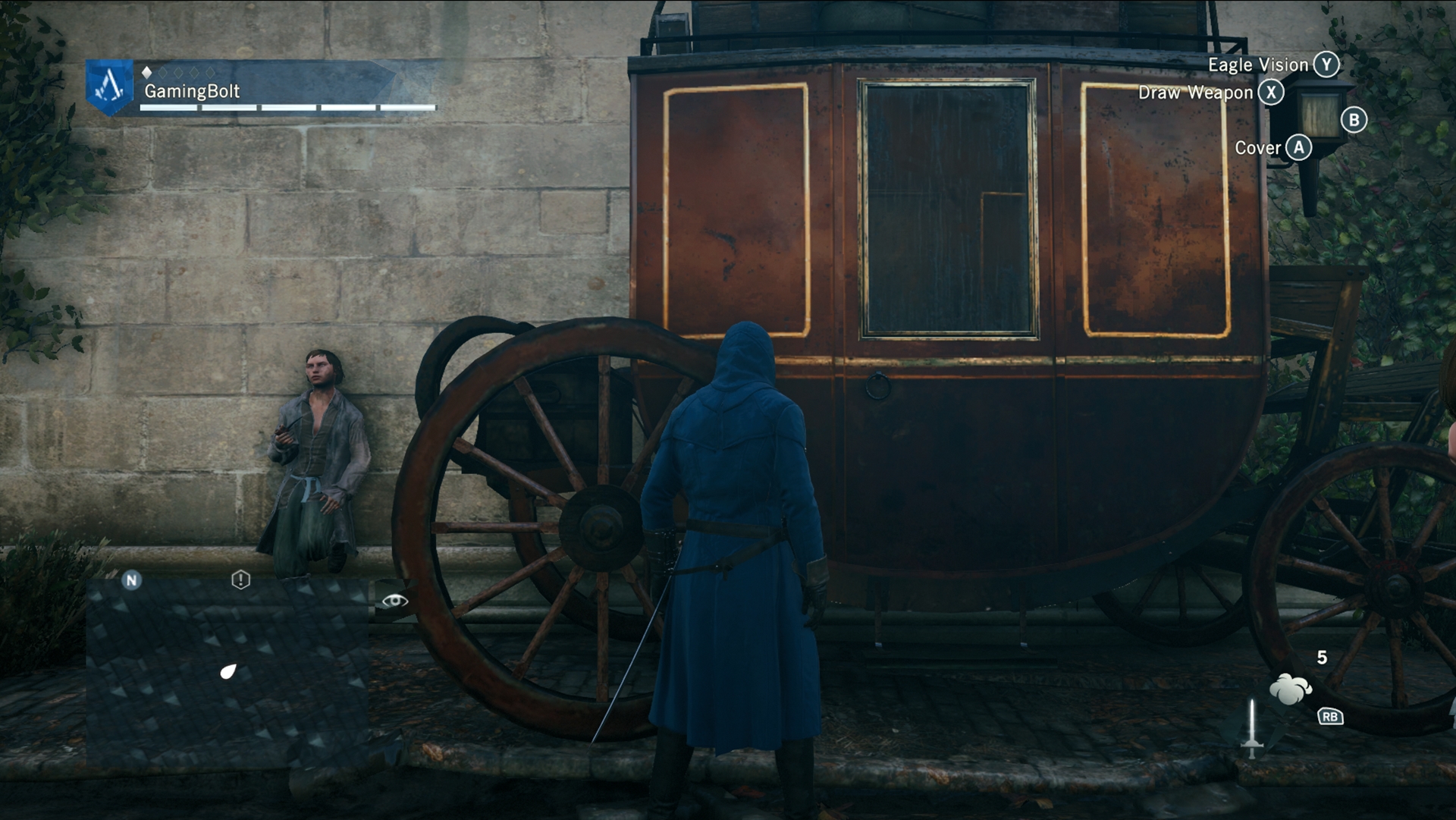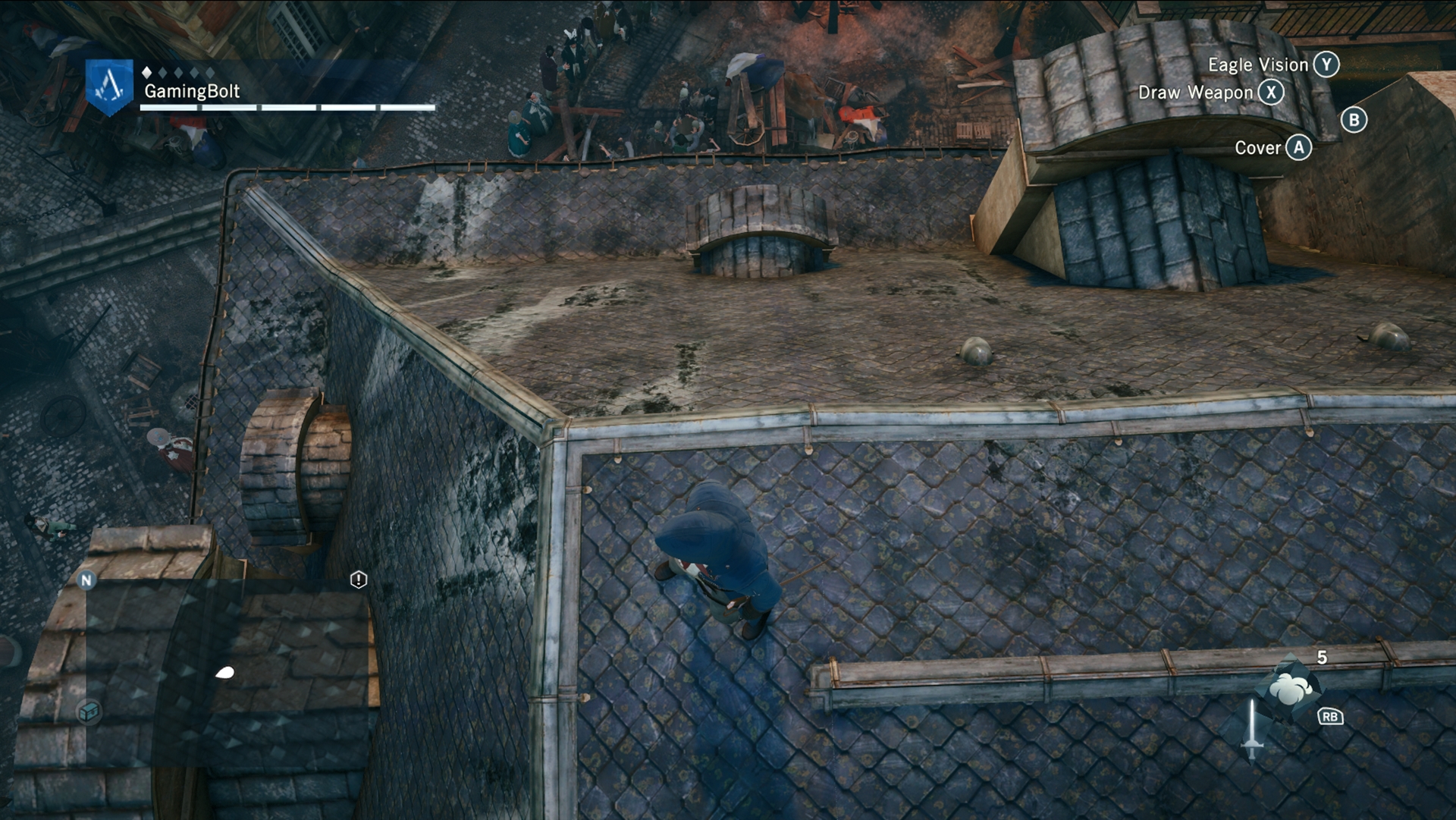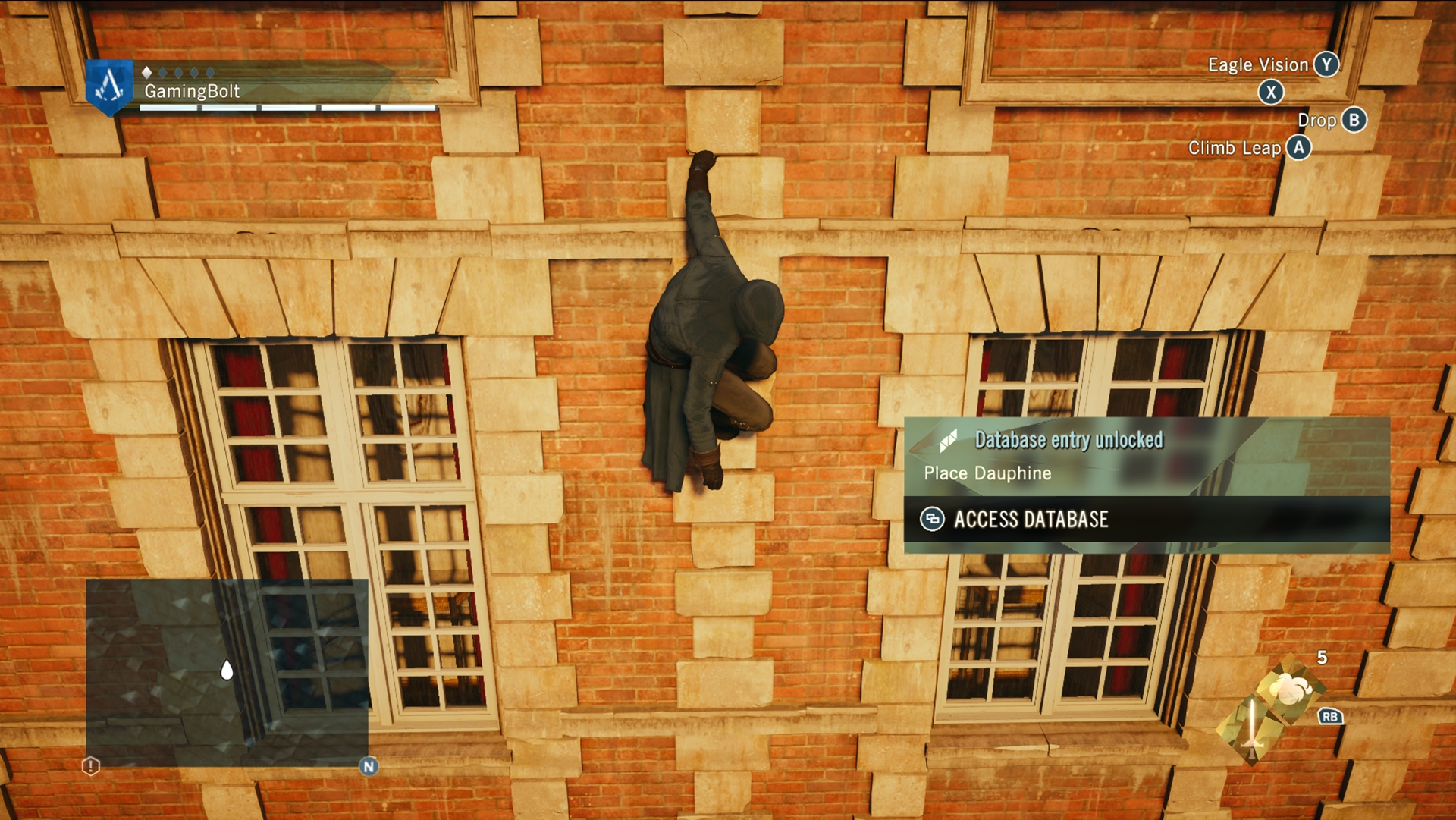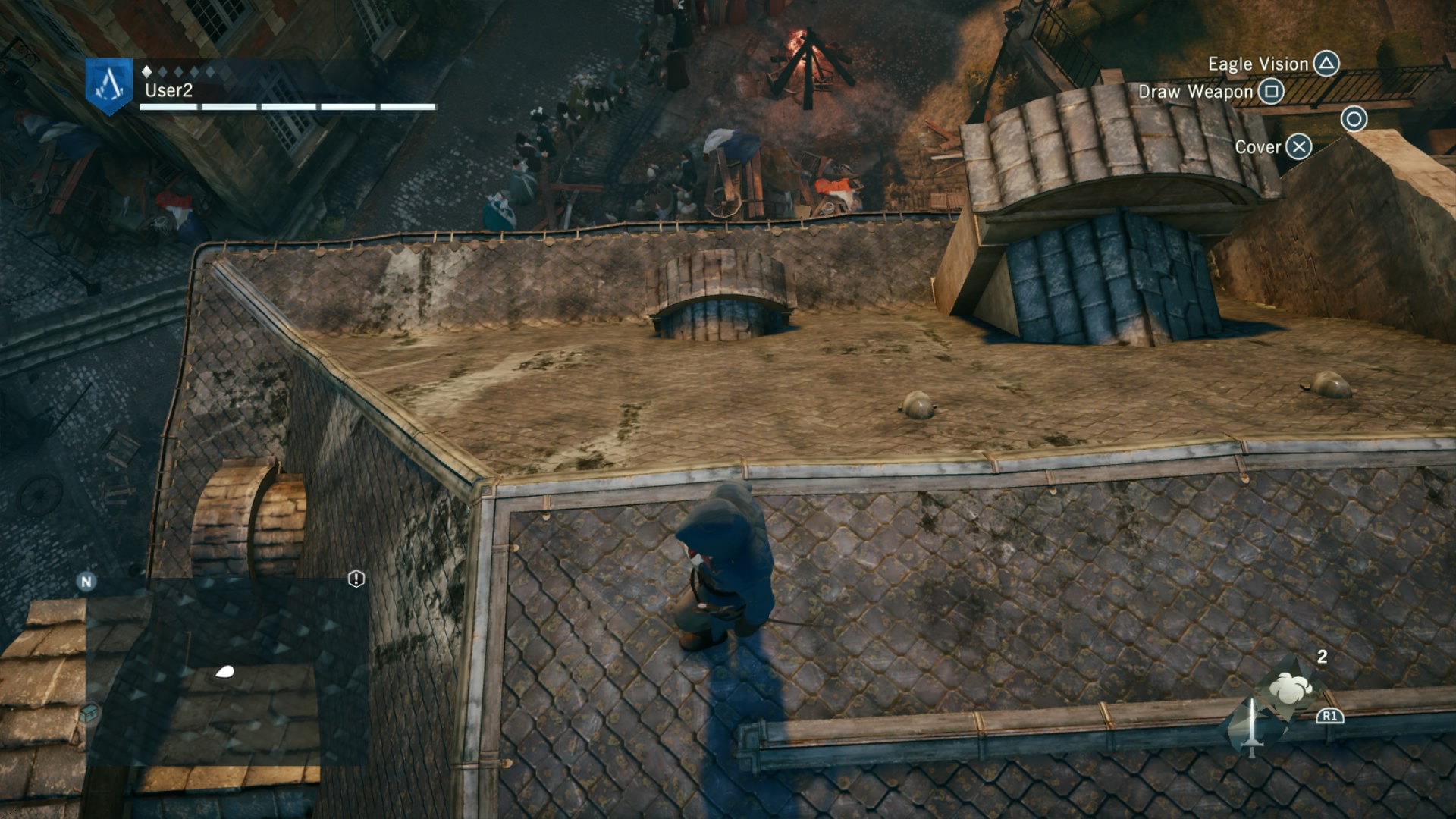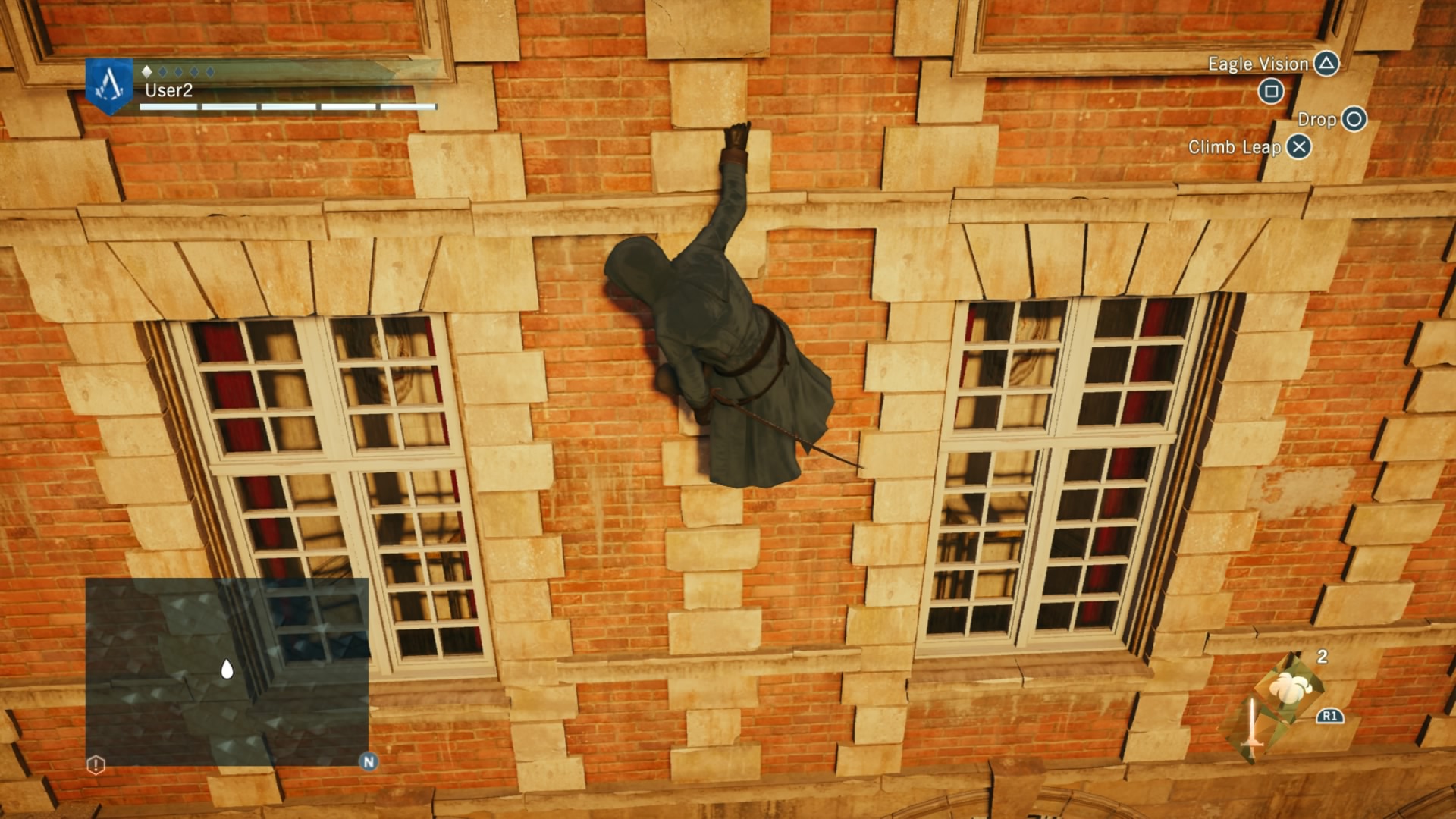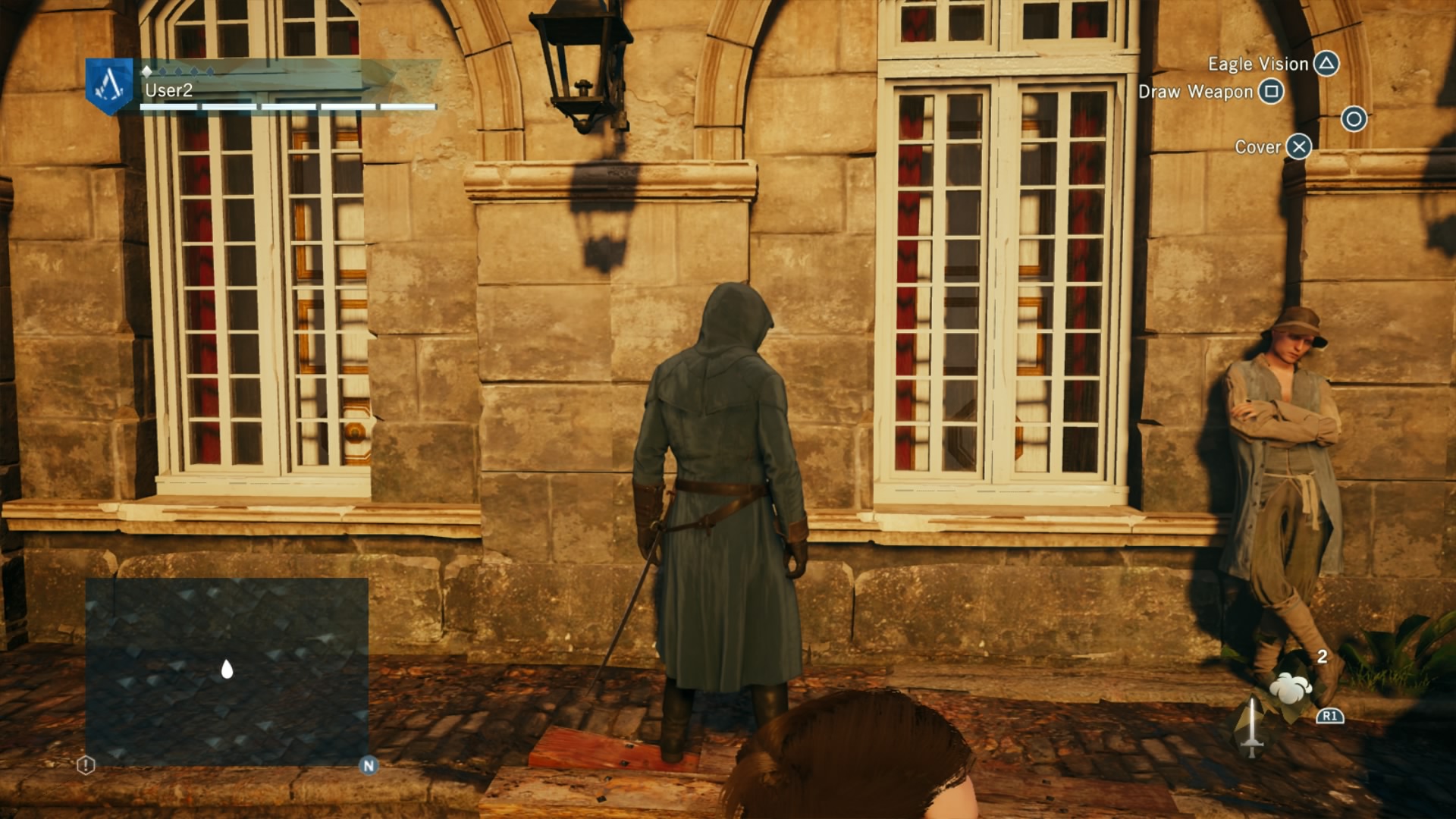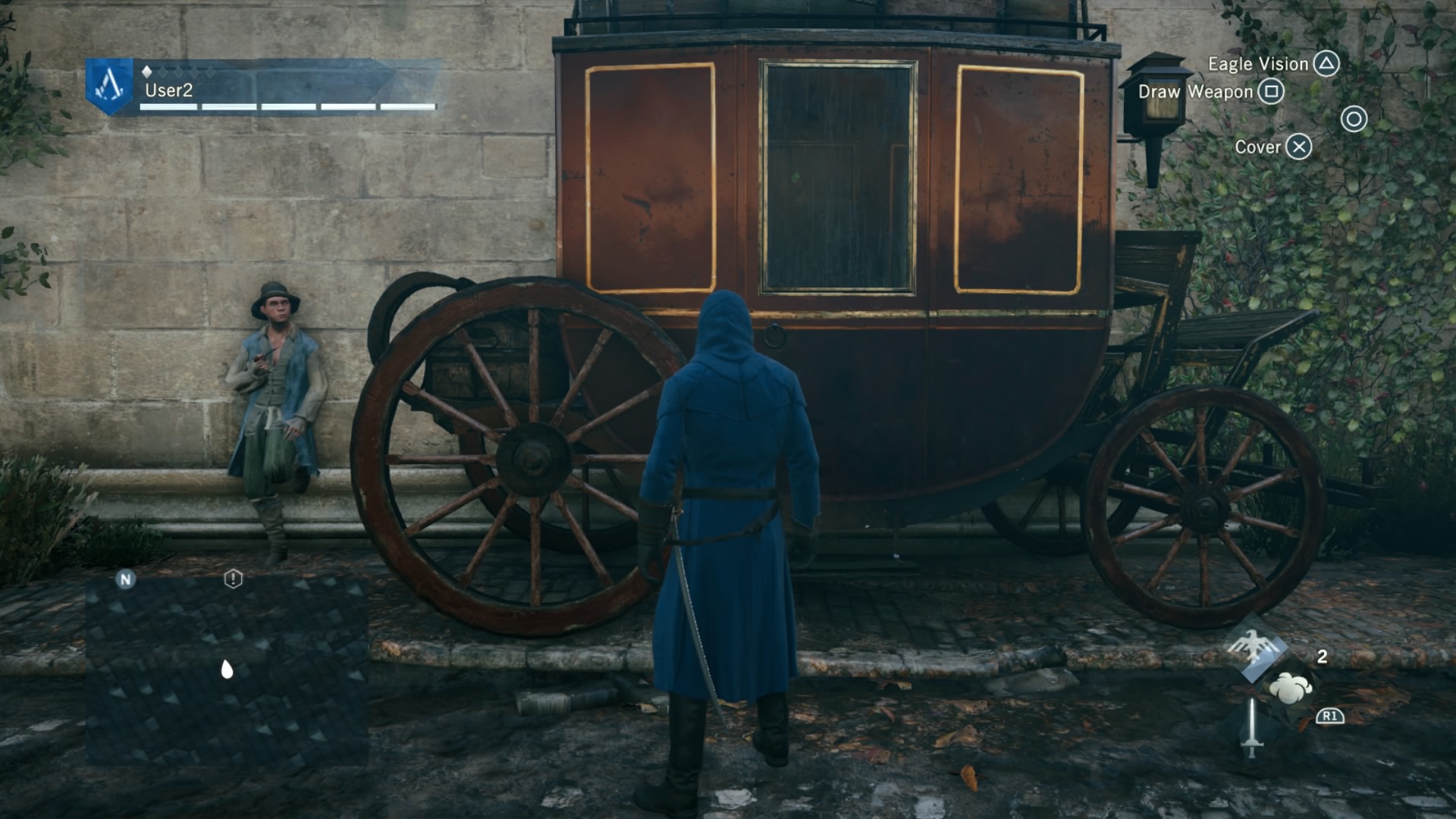
Game development has a number of steps in it. It isn’t just artists visualizing their design and programmers dancing to their tune. There are two other important steps that makes sure that the game is highly polished and is performing up to an optimal level. The two steps are optimization and quality assurance. Optimization is essentially rechecking your code and assets, and brain storming to find faster and better ways to do the same thing. Quality Assurance is where the game is tested across a number of parameters set by the the development team’s testers.
A selection of screenshots from the PC Version with everything turned up with variable anti-aliasing.
Corresponding screenshot from the PlayStation 4 version.
Unfortunately, it seems that Ubisoft skipped both of these highly important steps when developing the highly ambitious Assassin’s Creed Unity. We will get to the bad bits later but let us describe what Unity excels in. Assassins’ Creed Unity is perhaps one of the best looking games of all time. Its Physical Based Rendering and Global Illumination solutions lifts the visuals to an almost CG level and the animations are one of the best we have seen in video games. It’s an intriguing glimpse of what is possible with current generation of consoles and modern gaming PCs and a testament that games are very close to crossing the bridge that separates them from big budget movies.
However all of this is thrown out of the window when one actually sits down for a prolonged session with the game. This is not to say that the entire game is broken but it is simply unplayable at times. It’s highly disappointing that a game with so much potential is bogged down with serious stuttering and frame rate issues. We first tested the PC version across two admirable sets of configuration.
The first configuration was an AMD 8350 4.0 GHZ CPU and R 290 GPU coupled with 16 GB RAM. We were expecting a stable 30 frames per second along with 1080p as the configuration was pretty close to the recommended settings by Ubisoft. Unfortunately we came across massive frame rate drops in our play through. In some instances the drops were as unexpected as 1 fps, literally forcing us to quit the game. At an average, we saw frame rates ranging from the low 20s to high 30s with plenty of stutter in between. Dropping the anti-aliasing from 8X MSAA all the way to FXAA made no improvements at all. However we found out that changing the Shadow quality to its lower settings made substantial difference with frame rate gains up to 5 and in some areas up to 10.
A selection of screenshots from the PC Version. Tessellation will be added to the PC version while it is missing from the console versions.
Corresponding screenshots from the PlayStation 4 version.
On the Nvidia side of things we tested the game on a GTX 680 and Intel I7 4930K. It’s important to note that Assassin’s Creed Unity officially supports Nvidia’s Gameworks so we thought a solid 60 frames per second at 1080p should be easily achieved. Fortunately, we were able to hit the golden standard with very few drops in between. However there was still a lot of stutter in between and the frame rate dropped to around 55 when there was a lot of crowd on the screen.
Enabling PCSS bought in performance issues but playing around with its setting helped the performance somewhat. In short, the performance on AMD cards was disappointing. The game is not scale able across both the configurations as lowering the settings did not allowed us to run at a constant 60 frames per second. This is a clear sign that the game has been poorly optimized on the PC. Players will need a very powerful GPU to keep it running above 60fps and given that a very small part of the gaming community will have access to such high end rigs, it’s correct to assume that Unity on PC is a reminiscent of Watch_Dogs’s disaster on PC.
The issues that we faced on PC were almost identical across the PlayStation 4 and Xbox One versions although we did find one instance where the PS4 managed to keep itself up. However it must be noted that the console versions do manage to keep it up at 30fps most of the times. Unlike Dragon Age Inquisition on consoles, HBAO is not present on the consoles as Ubisoft have opted for less resource intensive SSAO.
Both the consoles use post processing anti-aliasing solution which is a reminiscent of FXAA on the PC version. Both the console versions runs at 900p resolution which is surprising considering that the PS4 has a more powerful GPU and several multiplatforms games, including last year’s Assassin’s Creed IV: Black Flag, ran at 1080p on Sony’s consoles.
It must also be noted that in certain scenes, Xbox One seems to have a more crisper image. This is something which we also observed during our initial analysis as well. The players may not probably notice the difference side by side and as such this does not weigh much in our final verdict. The console versions also lack any sort of tessellation, however this will be covered in the PC version.
Other than the frame rate issues, all the three versions have identical mishaps such as the disappointing LOD and draw distance. The details on the characters change on the fly when Arno is walkthrough the streets. NPCs may appear all of a sudden and pop in issues are abundant. The draw distance is extremely disappointing and perhaps the worse in an Assassin’s Creed game. Given the modern technologies that developers have access to, it’s disappointing to see lack of any details in the far distance.
A video comparison between the PS4 and Xbox One versions.
Two videos showcasing that the PlayStation 4 version seems to be hold itself well in crowded situations. However this is not a consistent situation.
A selection of screenshots from the PS4 [left] and Xbox One [right] versions.
Switching back to the frame rate issues, Ubisoft claims that large crowds are not the reason behind the drops and going offline may resolve the issue. But doing so resulted into no difference at all in the frame rate and stuttering. Ubisoft claims that crowds are not a resource hog but why do we need so many NPCs is beyond our apprehension. Whatever beauty Unity has is diminished by the large crowds and their laughable LOD. I understand the need for utilizing all the modern processing power to push the boundaries further, but at what cost? Ubisoft could have saved a few more CPU cycles by adding an adequate amount of NPCs instead of mindlessly flushing them in.
In the end, Ubisoft’s Assassin’s Creed Unity is a technical achievement but only when your character is standing at one place. We would recommend the PC version should you have the muscle to pull it off but a locked sixty frames per second is simply out of the question. The PS4 version at times performs the best in intense scenarios but on the other hand the Xbox One has a crisper image quality. But as these differences are few and far between, we cannot recommend one version over the other.
Assassin’s Creed Unity was simply not ready for a launch. Ubisoft were brave enough to delay Watch_Dogs. Unity could have benefited by a couple of months of additional testing. But it seems that Unity in its current state is a Beta version and players are paying to test it.
Disappointing.








